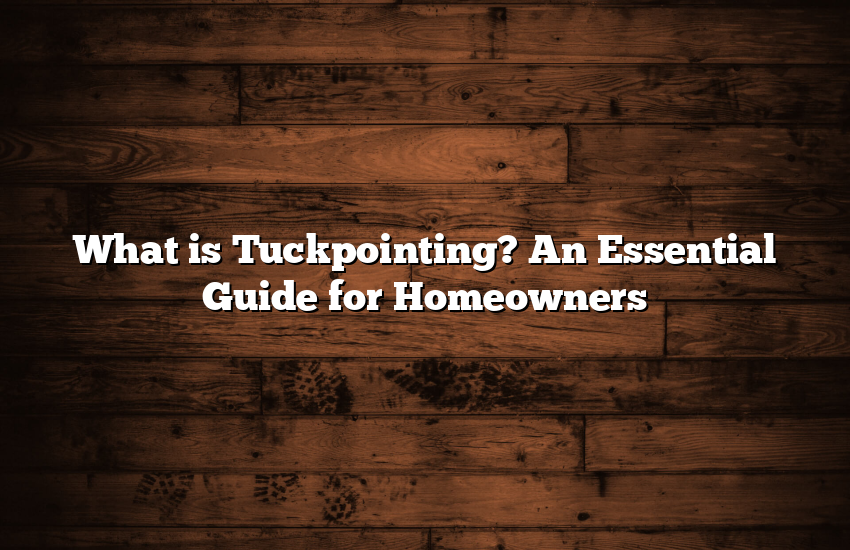
Tuckpointing, a term often heard but not always understood, refers to a crucial maintenance process for brick structures. It involves the removal and replacement of deteriorated, damaged, or old mortar between bricks, which is essential for maintaining the structural integrity and aesthetic appeal of brickwork. This guide aims to provide comprehensive insights into what tuckpointing is, its importance when it’s needed, the costs involved, DIY possibilities, and professional hiring tips, tailored specifically for homeowners in the USA.
Table of Contents
The Importance of Tuckpointing in Home Maintenance
Recognizing the Need for Tuckpointing
Tuckpointing is not just about enhancing the visual appeal of a home’s masonry; it’s a vital preventive maintenance step. Signs that tuckpointing might be necessary include broken, cracked, or missing mortar joints, and bricks showing signs of damage. It’s essential for homeowners to regularly inspect their brickwork or seek a professional mason’s opinion to determine if tuckpointing is required.
Longevity and Weather Factors
If done correctly, tuckpointed mortar can last up to 30 years. However, this longevity can vary depending on environmental factors such as frequent weather variations or proximity to coastal areas, where moisture and salt can accelerate deterioration.
The Cost Aspects of Tuckpointing
Factors Affecting the Cost
Tuckpointing costs can range between $5 to $25 per square foot, influenced by factors like the project’s size, accessibility, time of the year, mortar type, and whether the property is a historic one. Labor costs and additional charges for higher structures like chimneys (typically starting at $10 per square foot) also play a role in determining the overall expense.
DIY Tuckpointing: Is It Feasible?
Steps and Tools Required
For those considering DIY tuckpointing, the process, while straightforward, requires specific tools such as a mortar raking tool, hammer, chisel, joint filler tool, jointing tool, and masonry hawk. It’s important to match the new mortar’s color with the existing one, for which homeowners can consult local masonry suppliers.
Hiring a Professional: Tips and Tricks
Choosing the Right Mason
When opting for a professional, it’s crucial to select someone with tuck-pointing expertise. Key considerations should include the contractor’s portfolio, their ability to match mortar color, and gathering multiple quotes to understand the average cost.
Conclusion
This post aims to provide clear, concise, and easy-to-understand information about tuck pointing, making it accessible to an audience as young as 11 years old. The content covers all aspects of tuckpointing, ensuring a comprehensive understanding for homeowners in the USA.
Frequently Asked Questions About Tuckpointing
Q: What exactly is tuckpointing?
A: Tuck pointing is a maintenance process for brick structures involving the repair or replacement of mortar joints.
Q: How much does tuckpointing typically cost?
A: Tuck pointing costs range from $5 to $25 per square foot for walls and start at $10 for chimneys.
Q: Can homeowners DIY tuck-pointing projects?
A: Yes, with the right tools and guidance, homeowners can undertake tuck pointing as a DIY project.
Q: What signs indicate the need for tuck-pointing?
A: Signs include damaged or missing mortar joints and visible deterioration in the brickwork.
Q: What factors affect the cost of tuck pointing?
A: Consider project size, accessibility, time of year, mortar type, labor, and historical status to influence the overall cost.


